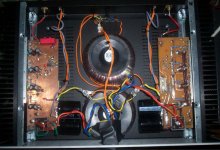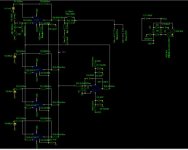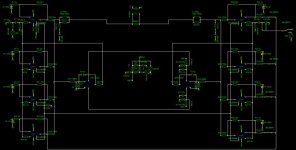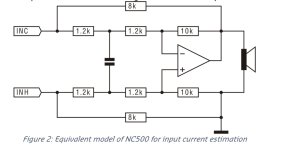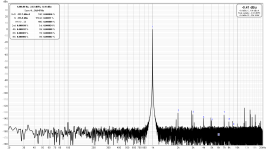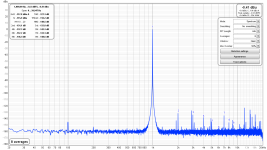H
HAYK
The TDA7293-4 has 3db more gain than 3886. You get slightly lower phase margine if you design with3886 model. You can also model with linear elements, voltage controled current source with shunt resistor to fix the DC gain and a capacitor to fix the gain 80db @1Khz and a unity gain buffer. For stability it says closed loop gain 30db, so to use it instead of 26db for 3886.I would appreciate if someone can double check my calculations above, thanks!
Also, is there tda7293 sim model at all?
I wonder if the solution @HAYK offered will work for that chip?
No, not that I'm aware of, that is. In general 7293/94 are in the LM3886 ballpark with regard to general open-loop gain/phase characteristic.Also, is there tda7293 sim model at all?
Only 80dB of open-loop gain, absolute minimum required noise gain is 24dB (30dB nominal) and in closed loop with 30dB the frequency response is -3dB down at ~200kHz, all of which can be used to estimate open-loop gain/phase.
H
HAYK
There is an ancestral way of adjusting the stability used with tube amps. You increase the NFB until it starts oscillating then retrieve 6db off, that is 6db gain margin.
In 2016 I made a 4x4 LM3886 with a single servo, which with the same batch of chips works with minimal stray currents on the R of 0.47 ohm. These currents will give less sense of final power. To avoid this, a C should be added in series with ground to the 1K R in the feedback of each chip.
I also had everything for a 4+4x4+4 with 2 servos and C in series with the 1K R in feedback, therefore pure or surrogate balanced, but I lost the desire...
I also had everything for a 4+4x4+4 with 2 servos and C in series with the 1K R in feedback, therefore pure or surrogate balanced, but I lost the desire...
Attachments
Sounds good to me. But you really feel the quality of the preamplifier in particular, it must also deliver current
Wouldn’t you need a servo for each individual lm3886 chip? why is there only one per four?In 2016 I made a 4x4 LM3886 with a single servo, which with the same batch of chips works with minimal stray currents on the R of 0.47 ohm. These currents will give less sense of final power. To avoid this, a C should be added in series with ground to the 1K R in the feedback of each chip.
I also had everything for a 4+4x4+4 with 2 servos and C in series with the 1K R in feedback, therefore pure or surrogate balanced, but I lost the desire...
If the chips are selected it also works with just one servo, otherwise it is better to also put the capacitors as mentioned
There is really nothing can be done about output dc offset, only current sharing resistors - 0r22 or 0r33 should provide sufficient reduction to where output offset error is insignificant.Also for the paralleled chips in case they "fight eachother" in case of differing offset?
Same with input offset currents, they will never be matched precisely equal, even if differential receiever four 0.1% resistors approach is used.
I consider those engineering compromises that can be minimized but unfortunately cannot be eliminated.
A schematic of your project would be interesting to see.Excited about my latest revision of the LM3886-based amplifier!
Hello Pbilous, I almost forgot this thread, did you make any progress?
In the meantime I did nothing about what we talked during last winter, busy with other projects...
However I had one idea in mind, If I got it right there was problem to keep FB resistors low for LM3886 performance, but than driver opamp at "negative leg"sees too low impedance at its output .
The idea is if you use BUF634 (or something like that) in feedback loop of "lower" opamp. At super high speed these BUF's have there is little chance it will degrade performance, but will allow you to drive low Z FB network of 4 paralleled LM3886... Makes sense?
In the meantime I did nothing about what we talked during last winter, busy with other projects...
However I had one idea in mind, If I got it right there was problem to keep FB resistors low for LM3886 performance, but than driver opamp at "negative leg"sees too low impedance at its output .
The idea is if you use BUF634 (or something like that) in feedback loop of "lower" opamp. At super high speed these BUF's have there is little chance it will degrade performance, but will allow you to drive low Z FB network of 4 paralleled LM3886... Makes sense?
Yes, I have made some progress - assembled prototype board for one channel. Now I am trying to figure out my new measurement setup using cosmos ADC.
I will then try OPA1656, OPA828, TPA6120, and BUF634 as input buffer.
I will then try OPA1656, OPA828, TPA6120, and BUF634 as input buffer.
- Home
- Amplifiers
- Chip Amps
- Another LM3886 in parallel attempt - this time 4 of them!

